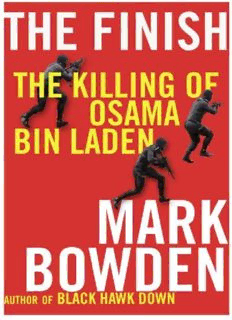
The Finish: The Killing of Osama Bin Laden PDF
Preview The Finish: The Killing of Osama Bin Laden
The Finish Also by Mark Bowden Doctor Dealer Bringing the Heat Black Hawk Down Killing Pablo Finders Keepers Road Work Guests of the Ayatollah The Best Game Ever Worm The Finish The Killing of Osama bin Laden Mark Bowden Atlantic Monthly Press NewYork Copyright © 2012 by Mark Bowden All rights reserved. No part of this book may be reproduced in any form or by any electronic or mechanical means, including information storage and retrieval systems, without permission in writing from the publisher, except by a reviewer, who may quote brief passages in a review. Scanning, uploading, and electronic distribution of this book or the facilitation of such without the permission of the publisher is prohibited. Please purchase only authorized electronic editions, and do not participate in or encourage electronic piracy of copyrighted materials. Your support of the author’s rights is appreciated. Any member of educational institutions wishing to photocopy part or all of the work for classroom use, or anthology, should send inquiries to Grove/Atlantic, Inc., 841 Broadway, New York, NY 10003 or [email protected]. Published simultaneously in Canada Printed in the United States of America ISBN-13: 978-0-8021-9410-7 Atlantic Monthly Press an imprint of Grove/Atlantic, Inc. 841 Broadway New York, NY 10003 Distributed by Publishers Group West www.groveatlantic.com For Clara and Audrey Human groupings have one main purpose: to assert everyone’s right to be different, to be special, to think, to feel and live in his or her own way. People join together in order to win or defend this right. But this is where a terrible, fateful error is born: the belief that these groupings in the name of a race, a God, a party, or a state are the very purpose of life and not simply a means to an end. No! The only true and lasting meaning of the struggle for life lies in the individual, in his modest peculiarities and in his right to these peculiarities. —Vasily Grossman, Life and Fate The properties of a movement are spontaneity, impulsiveness, dynamic expansiveness—and a short life. The properties of a structure are inertia, resilience, and an amazing, almost instinctive, ability to survive. —Ryszard Kapus´cin´ski, Shah of Shahs Contents Prologue 1: A Definition of Evil 2: The Path of Jihad 3: Taking Up Arms 4: The Targeting Engine 5: “Please Make Sure to Keep the Children and All of the Families Away from the Areas That Are Being Photographed and Bombed” 6: Disguised Uncertainty 7: “Adhering to These Precautions” 8: The Finish 9: Glitter Acknowledgments and Notes Prologue 2007–2008 One fall night in western Iraq, as a unit from the U.S. Joint Special Operations Command (JSOC) was executing one of its nightly raids on suspected al Qaeda terrorists, this one a suspected regional commander who called himself “Muthanna,” the raiders inadvertently discovered the mother lode. In another war in a different time, the “mother lode” might have been a huge cache of valuable weapons or a collection of battlefield maps showing enemy troop movements and positions. In the twenty-first century, the raiders of JSOC had discovered something of equivalent value: a Rolodex. Muthanna was killed in the raid. It was clear from material seized at his residence that he was responsible for coordinating the movement of foreign al Qaeda fighters and potential suicide bombers across the nearby border with Syria and into Iraq, where American and Iraqi forces, and Iraqi civilians, were enduring a mounting campaign of mass slaughter. What they found was not an actual Rolodex; it was something better: a collection of names and numbers that referenced computer files containing names, photos, travel documents, expense reports for phone cards, clothing, vehicles, fuel, money transfers, and many other detailed documents for about five hundred current al Qaeda recruits—just about every mujahidin who had made the trek in recent years through Syria and into Iraq. For centuries, the basic tactics of infantry warfare were “fire and maneuver.” A skilled officer could defeat a larger force by mastering the art of moving his men and effectively focusing their firepower. Those kinds of skills are still essential on a conventional battlefield, but the battles being fought today rarely boil down to armies maneuvering on the ground. “Information and intelligence is the fire and maneuver of the twenty-first century,” says Lt. Gen. Michael Flynn, who now heads the U.S. Defense Intelligence Agency. What does he mean? The mother lode of documents seized in what became known as the Sinjar raid illustrates the point nicely. It played a big part in decapitating al Qaeda in Iraq. In the six years after the 9/11 attacks, the U.S. military and intelligence communities, representing a wide variety of agencies large and small, those notorious and those secret, had been collaborating on an unprecedented
Description: